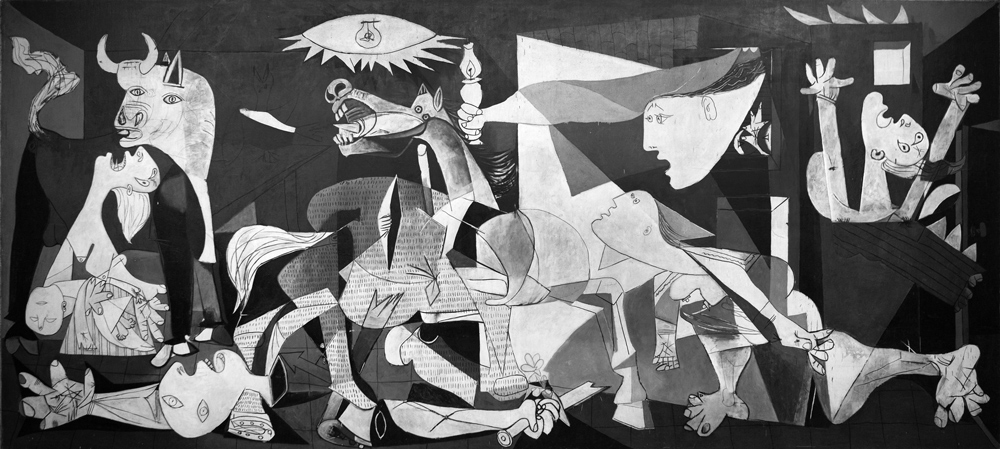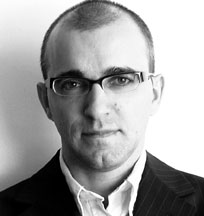« Features
Push to Flush. Things You Probably Don´t Know About Picasso´s Guernica
Many believe Picasso’s Guernica is the most important artwork in the history of art. Why? To put it in Alfred H. Barr Jr.’s words: “What makes a great art work really great is always a mystery.”
Guernica was exhibited for 11 years at the Casón del Buen Retiro, an annex of the Prado museum, since MoMA returned the painting in 1981 to Spain and after 1992 at the Museo Nacional Centro de Arte Reina Sofía (MNCARS) in Madrid.
There are still so many mysteries, misunderstandings and stories revolving around Guernica about which not only scholars but the larger public in general are unaware that an ekdosis becomes mandatory now that we are about to reach its 80th anniversary.
So here we go.
1) Guernica has no chronotope: nothing in the panting refers either timely or spatially to the Spanish city of Guernica. We don´t find the famous Guernica tree nor the famous “fueros,” or laws, of Guernica nor any other element that hints at Guernica. To be more precise, the painting should have been titled “Durango,” the city that had been bombed to the ground on March 31, 1937, as these were the images that Picasso saw in the French Communist paper L’Humanité on April 28 of that same year accompanying the headline of the attack on Guernica.
2) In January 1937 a small group of representatives of the Government of the Spanish Republic-which included Basque poet Juan Larrea and Max Aub, the secretary of the Spanish Embassy in France-visited Picasso with the mission of commissioning the artist to create a large, propagandistic mural for the Spanish Pavilion at the Paris International Exposition to open on May 25.
3) Picasso had already shown publicly his support of the Spanish Republic by accepting, on Sept. 20, 1936, the position of director of the Prado Museum, which he held until 1939. It was an honorary post de facto while Picasso remained in Paris, as his voice was more important from a propagandistic point of view to be heard from Paris.
4) This was the first and last political commission Picasso accepted, for which the Spanish Republic paid the artist the then-incredible amount of 150,000 French francs.
5) The fact is that until the bombing of Guernica on April 26, 1937, Picasso was entangled in versions of the painter and his model and had no clue at all how to rise to the challenge of creating a truly propagandistic artwork in defense of the Spanish Republic against the fascist forces of Franco. It is Larrea who had personally witnessed the bombing in Guernica and on April 27 informs Picasso of the bombardment and tells him explicitly that this is the perfect theme for the commission.
6) Obsessed, Picasso starts on May 1 with the first preparatory drawing-there were 60 drawings total-and finishes the 26-foot canvas on June 22, but all the symbolism present in Guernica stem already from works from the late 1920s and 1930s.

Pablo Picasso, Guernica, 1937. Photo: Manuel Galrinho. Source: www.flickr.com/photos/galrinho/5410199284
7) The mural was not deemed sufficiently propagandistic by the Government of the Spanish Republic and was about to be moved to the second floor of the Spanish Pavilion in favor of an explicit painting titled Madrid 1937 (Black Aeroplanes) by Horacio Ferrer, which featured women fleeing in terror, their children in their arms, crying out against the bombings. Although the public didn’t immediately embrace Guernica, the painting attracted great attention, especially by art professionals, and it maintained its pivotal position at the lower floor of the pavilion.
8) It was Alfred H. Barr, Jr., who, during the Symposium on Guernica held at MoMA on Nov. 25, 1947, offered an interpretation that shifted the meaning of the work from a propagandistic mural in defense of the Spanish Republic to a general outcry against atrocity, inhumanity, barbarism and death, contributing to its current lofty standing in the art world. Many years later, United Nations officials covered a tapestry reproduction of Guernica during U.S. Secretary of State Colin Powell´s Feb. 5, 2003, presentation of the U.S case for war against Iraq.
9) From an iconological point of view, one of the major conflicts even today is whether the dying horse represents the fate of the Spanish people and the bull Franco and the fascists hordes. Just some days after the liberation of Paris on March 13, 1945, in an interview with Jerome Seckler, Picasso explains that the bull represents brutality and the horse symbolizes the people. Juan Larrea sends him a letter on Sept. 6, 1947, exhorting him to state publicly that the horse represents Franco and his fascists. Picasso never did, adding to the confusion.
10) MoMA finally returned the painting to Spain to follow the wishes Picasso set forth in his will, stipulating that Guernica should only return to Spain when the country is again ruled as a republic, which absolutely was not the case with King Juan Carlos and the monarchist democracy created and nurtured by Franco.
And, as a final bonus, here is an intriguing fact entrusted to me by artist José Ramón Amondarain: If you play with the letters of Guernica you can spell “urgencia” (urgency). Which is pretty amazing, isn´t it?
Paco Barragán is the visual arts curator of Centro Cultural Matucana 100 in Santiago, Chile. He recently curated “Intimate Strangers: Politics as Celebrity, Celebrity as Politics” and “Alfredo Jaar: May 1, 2011″ (Matucana 100, 2015), “Guided Tour: Artist, Museum, Spectator” (MUSAC, Leon, Spain, 2015) and “Erwin Olaf: The Empire of Illusion” (MACRO, Rosario, Argentina, 2015). He is author of The Art to Come (Subastas Siglo XXI, 2002) and The Art Fair Age (CHARTA, 2008).




































Leave a Reply
You must be logged in to post a comment.